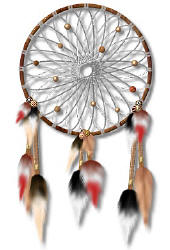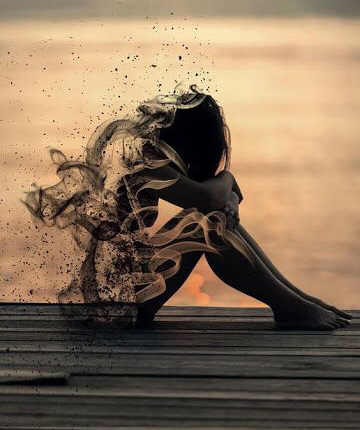What’s a dream catcher?

Autor Adília Belotti
Assunto STUM WORLDAtualizado em 29/07/2006 12:49:02
Translated by Cleonice Franco - [email protected]
Do you have a dream catcher hung on your window? Do you know what it is for or how it works? No? So find out here why these beautiful dream-catching webs are so successful. And good night!
Dream catchers are definitely in fashion. You can find them in almost all esoteric stores. Although the name dream catcher is quite suggestive, hardly everybody knows exactly what these beautiful round objects decorated with feathers and beads are for.
The dream catchers came to Brazil from the USA. But they are far from being a passing fashion there. Almost all American Indians tribes incorporated them to their traditions a long time ago, and legends about them spread freely everywhere.
Although nowadays all these Indian nations produce their own dream catchers, their history begins with the Ojibwe (or Chippewa) Indians.
The history of the Dream Catchers
Dreams used to have a fundamental role in the Ojibwe’s life. For this people who lived in the American Great Lakes Region and today is also spreading to other New Mexico’s regions, learning to decipher the messages revealed in dreams was the most important task one had during their passage on Earth. For this reason, the dream catcher was an essential tool.
Actually, the dream catcher (in Portuguese, dream filter) is not a filter, it is a web. The Ojibwe believe that when night falls, the air gets full of dreams, good and bad. Some of these dreams, even when they are nightmares, may contain an important message from the Great Spirit for us. Then, in fact, these dreams are good dreams. However, there are other bad dreams and energies floating around us that do not belong to us. These are the ones that may be evil to us. The dream catchers exist exactly to separate these bad dreams and energies.
Tradition says that the colorful webs be hung above the babies’ cradles and children’s beds. The good dreams, knowing where to go, manage to go through the central hole of the web, whereas the bad dreams get lost and end up stuck on the threads. When the first sun rays appear, the bad dreams disappear. The circles are made of flexible willow branches and covered with leather strips.
A feather is placed in the center, representing the air or breath, essential to life. The baby, on watching the feather dance in the wind, learns a lesson about the importance of the air. Besides that, the owl’s feather, feminine, symbolizes wisdom. The eagle’s feather, masculine, is meant to bring courage.
In order to catch the adults’ dreams, the dream catchers are woven in fiber, not with willow branches. That’s why they are more resistant.
How the Spider gave the dream web to the human beings:
There are many stories related to spiders and Spider-Women among the American Indians’ several nations. In many of these traditions, for instance, the Spider- Woman is a fundamental and wise character, one moment, a Sun messenger, the other, the Sun’s own grandmother and organizer of life on Earth. There are several legends related to the dream catchers. This one we chose is only one of the versions.
A spider was spinning its web next to the grandmother’s bed (Nokomi). Everyday she observed the spider work. Some days later, her grandson came in, and when he saw the spider on the web, got a stone to kill it. But his grandmother didn’t let him. The boy found it odd, but respected her wish. The old woman observed the animal’s work once more; then the spider spoke: “Thanks for saving my life. I’ll give you a present because of that. In the next New Moon I’ll spin a web on your window. I want you to observe carefully and learn how to weave the threads, because this web will help to catch all the bad dreams and energies. The small hole in the center will let the good dreams pass and make them get to you”.
When the Moon arrived, the grandmother saw the spider spin its magic web and was grateful and happy for the wonderful present. “Learn”, said the spider. Finally, feeling exhausted, the grandmother fell asleep. When the first sun rays appeared in the sky, she woke up and saw the web shining like a jewel, thanks to the dew drops captured on the threads. The breeze brought dove feathers that also got stuck to the web, dancing merrily. Lastly, a crow landed on the web and hung a big feather. From within the web mesh, Father Sun smiled happily. And the grandmother taught all in the tribe how to make dream catchers gladly. Until today they have been removing nightmares from lots of people. Who knows it will work for you too?
Extracted from the site Spiritual Network
Here you learn how to make your own dream catcher (in English).
Adília Belotti is a journalist and has four children. She is the editor responsible for DELAS, the feminine site of the IG Portal, where she has a column called “Toque da Alma” (Touches of the Soul). Besides that, she takes care of the “IgEducação” and a multimedia culture site, the “Arte Digital” (Digital Art). She is now also a STUM columnist.
In 2006 she launched her first book: 'Toques da Alma', only in Portuguese.









